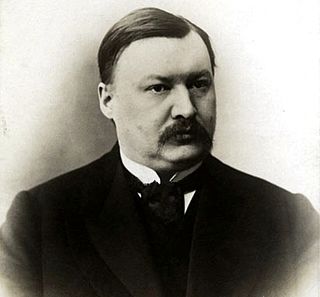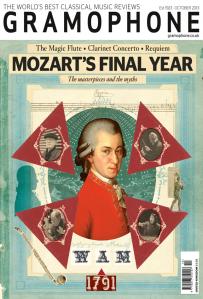
Felix Mendelssohn's Violin Concerto in E minor, Op. 64, is his last large orchestral work. It forms an important part of the violin repertoire and is one of the most popular and most frequently performed violin concertos in history. A typical performance lasts just under half an hour.
Piano Concerto No. 4 in C minor, Op. 44 by Camille Saint-Saëns, is the composer's most structurally innovative piano concerto. In one sense it is structured like a four-movement symphony, but these are grouped in pairs. That is, the piece is divided into two parts, each of which combines two main movements. However, in each part there is a bridge-like transitional section, between the two main "movements" – for example, a fugal Andante in part II functions as an interlude between the two main triple-meter sections.
- Allegro moderato – Andante
- Allegro vivace – Andante – Allegro

The Violin Concerto in A minor, Op. 82, by Alexander Glazunov is one of his most popular compositions. Written in 1904, the concerto was dedicated to violinist Leopold Auer, who gave the first performance at a Russian Musical Society concert in St. Petersburg on 15 February 1905. The British premiere of the concerto followed just over a year later, under the direction of Sir Henry Wood and with Mischa Elman as soloist.
Violin Concerto No. 2 in D Minor "in the Hungarian Manner", Op.11 is a Romantic violin concerto written by violinist Joseph Joachim (1831–1907). Rarely performed, it has been described as "the Holy Grail of Romantic violin concertos." by music critic David Hurwitz.
Aram Khachaturian's Piano Concerto in D-flat major, Op. 38, was composed in 1936. It was his first work to bring him recognition in the West, and it immediately entered the repertoire of many notable pianists.

The Cello Concerto in D major is Arthur Sullivan's only concerto and was one of his earliest large-scale works. It was written for the Italian cellist Alfredo Piatti and premiered on 24 November 1866 at the Crystal Palace, London, with August Manns conducting. After this, it was performed only a few times. The score was not published, and the manuscript was destroyed in a fire in the 1960s, but the full score was reconstructed by the conductors Sir Charles Mackerras and David Mackie in the 1980s. Their version was premiered and published in 1986.

Pyotr Ilyich Tchaikovsky's Piano Concerto No. 3 in E-flat major, Op. posth. 75, was originally begun as a Symphony in E-flat. The composer ultimately abandoned this symphony, but, in 1893, started to rework it into a piano concerto, before abandoning all but the first movement, which he completed as a concert piece for piano and orchestra. It was published posthumously, in 1894, as a single-movement Allegro Brillante. The Symphony No. 6 Pathétique was the last of Tchaikovsky's compositions to be performed in his lifetime, but the Allegro Brillante, now known as the Piano Concerto No. 3, was his last completed composition.

The Andante and Finale is a composition for piano and orchestra that was reworked by Sergei Taneyev from sketches by Pyotr Ilyich Tchaikovsky for the abandoned latter movements of his single-movement Piano Concerto No. 3 in E-flat, Op. 75.
An organ concerto is a piece of music, an instrumental concerto for a pipe organ soloist with an orchestra. The form first evolves in the 18th century, when composers including Antonio Vivaldi, Johann Sebastian Bach and George Frideric Handel wrote organ concertos with small orchestras, and with solo parts which rarely call for the organ pedal board. During the Classical period the organ concerto became popular in many places, especially in Bavaria, Austria and Bohemia, reaching a position of being almost an integral part of the church music tradition of jubilus character. From the Romantic era fewer works are known. Finally, there are some 20th- and 21st-century examples, of which the concerto by Francis Poulenc has entered the basic repertoire, and is quite frequently played.
Symphony No. 2, Op. 132, Mysterious Mountain is a three-movement orchestral composition by the Armenian-American composer Alan Hovhaness. The symphony was commissioned by the conductor Leopold Stokowski and the Houston Symphony, and premiered live on NBC television in October 1955 on the Houston Symphony's first program with Stokowski as conductor. The first and most popular recording of the work, released in 1958 with the Chicago Symphony Orchestra performing under Fritz Reiner, is often regarded as the foremost performance of the piece. This recording, like early performances of the work, predates the composer's decision to categorize the work "symphony". Later on, the G. Schirmer published score was titled Mysterious Mountain with "Symphony No. 2" printed as a subtitle in smaller typeface.
Symphony No. 50, Op. 360, Mount St. Helens is a three-movement orchestral composition by the American composer Alan Hovhaness. The symphony was commissioned by former Hovhaness publisher C.F. Peters and was completed January 24, 1982. It premiered March 2, 1984, and was performed by the San Jose Symphony under conductor George Cleve. The piece commemorates the volcano Mount St. Helens, culminating in the events of its 1980 eruption, which Hovhaness had witnessed from his Seattle home.
The Symphony No. 60, Op. 396, To the Appalachian Mountains is a symphony for orchestra in four movements written by the American composer Alan Hovhaness. The work was commissioned August 6, 1985 by Martin Marietta Energy Systems, Inc. for "Homecoming '86", an event celebrating the cultural heritage of Tennessee. It was composed in November and December 1985 and commemorates the geography and heritage of the Appalachian Mountains region.
The Symphony No. 22, Op. 236, City of Light is a four-movement symphony for orchestra by the American composer Alan Hovhaness. The work was commissioned by the Birmingham Symphony Orchestra for the centennial of Birmingham, Alabama and was completed in 1970. The work has been recorded multiple times and remains one of Hovhaness's more popular compositions.
The Symphony No. 66, Op. 428, Hymn to Glacier Peak is an orchestral composition in three movements and the penultimate symphony by the American composer Alan Hovhaness. The work was commissioned by the Seattle Youth Symphony Orchestra and was completed in 1992, shortly before its premiere by the Seattle Youth Symphony, conducted by Ruben Gurevich, at the Seattle Opera House on May 10, 1992. The title of the work comes from the stratovolcano Glacier Peak in the Cascade Range, visible from Hovhaness's home in Seattle, Washington.
The Guitar Concerto No. 1, Op. 325, is a concerto for classical guitar and orchestra by the American composer Alan Hovhaness. The work was commissioned by the SRO Production Performing Artist Management and the Minnesota Orchestra for the guitarist Javier Calderon in July 1978. It was completed January 21, 1979, and was premiered later that summer by Calderon and the Minnesota Orchestra under conductor Leonard Slatkin.
The Symphony No. 63, Op. 411, Loon Lake is a symphony for orchestra in two movements by the American composer Alan Hovhaness. The work was commissioned in September 1987 by the New Hampshire Music Festival and the Loon Preservation Society. It was completed in early 1988 and premiered August 18, 1988, with conductor Thomas Nee leading the New Hampshire Music Festival Orchestra. The ending of the piece was later revised by Hovhaness at the request of his wife; the revised symphony premiered July 2, 1991, and is the only version available on recording.

Symphony No. 8 is a composition by the Brazilian composer Heitor Villa-Lobos, written in 1950. A performance lasts about 25 minutes
The Concerto for Piano and Orchestra is a piano concerto by the American composer John Corigliano. The work was commissioned by the San Antonio Symphony and was first performed on April 7, 1968 by the pianist Hilde Somer and the San Antonio Symphony under the direction of Victor Alessandro. The piece is dedicated to John Atkins.
The Symphony No. 3 is a composition for orchestra by the American composer Ned Rorem. The work was first performed by the New York Philharmonic under the direction of Leonard Bernstein at Carnegie Hall on April 16, 1959.
The Sinfonie di concerto grosso is the title of twelve works for flute, strings and basso continuo by Alessandro Scarlatti, composed in Naples from June 1, 1715 - the same year as the performance of his opera Tigrane, one of his greatest successes, and his oratorio La Santissima Trinità.








